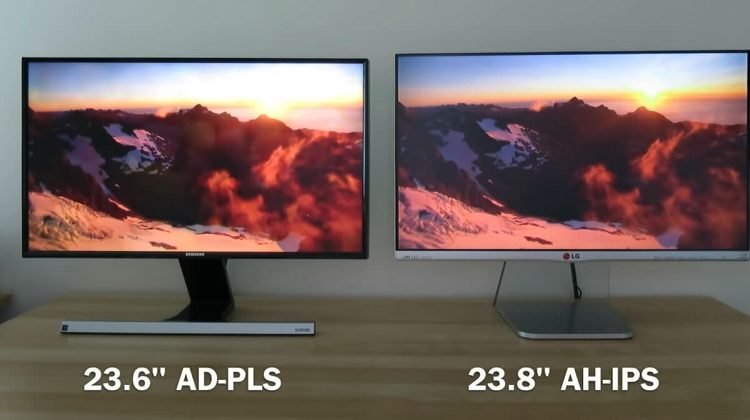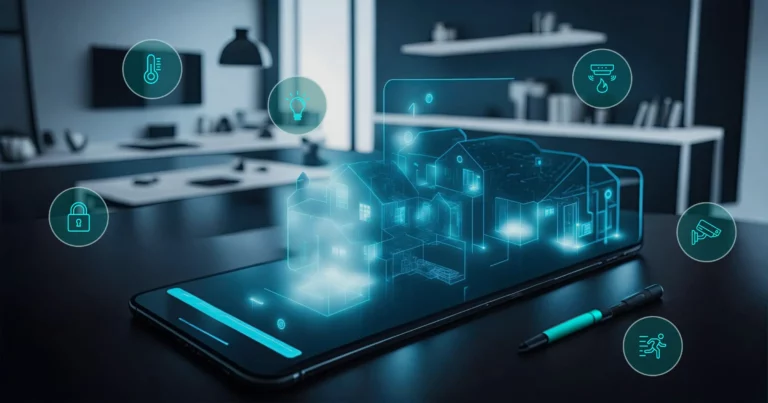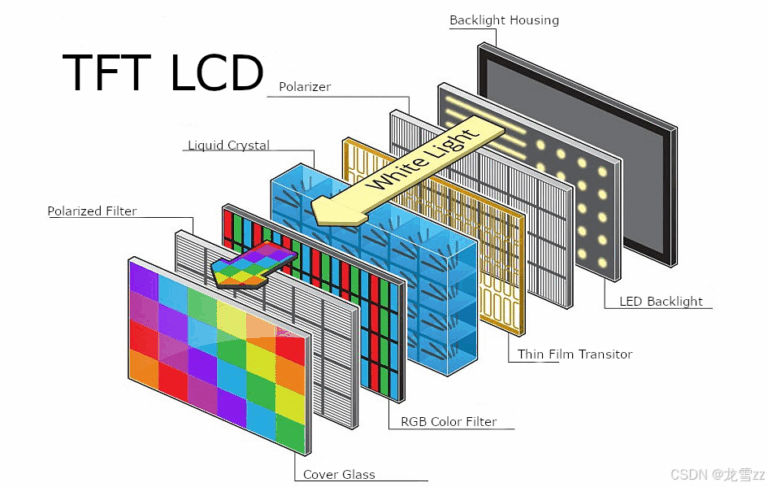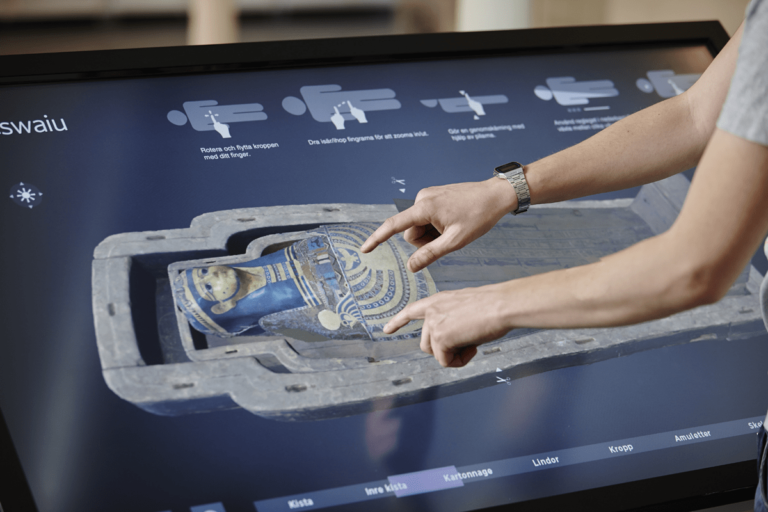- 1 Was ist ein PLS-Bildschirm?
- 2 Was ist ein IPS-Panel?
- 3 PLS vs. IPS: Was ist der wirkliche Unterschied?
- 4 Sind PLS-Bildschirme besser als IPS-Bildschirme?
- 5 Anwendungsfälle für IPS-Panels
- 6 Tausende von Produkten sind in unserem Katalog verfügbar.
- 7 Sollten Sie PLS oder IPS für Ihr nächstes Display-Projekt wählen?
- 8 Häufig gestellte Fragen
Was ist ein PLS-Bildschirm?
PLS, oder Ebene-zu-Leitung-Vermittlungist eine Display-Technologie, die von Samsung als direkter Konkurrent von IPS (In-Plane Switching). Es baut auf denselben Grundprinzipien der Flüssigkristallausrichtung auf, um Blickwinkel, Farbstabilität und Bildqualität zu verbessern.
Aus technischer Sicht ist eine PLS-Bildschirm ist eine Art von TFT-LCD-Panel, das:
- Horizontale Ausrichtung von Flüssigkristallen (wie IPS)
- Bietet große Betrachtungswinkel und Farbtreue
- Verbessert die Lichtdurchlässigkeit (Lichtausbeute)
PLS ist zwar nicht so weit verbreitet wie IPS, kommt aber in Samsung-Monitoren, Tablets und einigen professionellen Displays zum Einsatz, vor allem dort, wo es auf Farbgleichheit ankommt.
Was ist ein IPS-Panel?
IPS, kurz für In-Plane-Switchingist die dominierende Weitwinkel-LCD-Technologie, die heute verwendet wird. IPS-Panels wurden von Hitachi entwickelt und sind bei vielen Marken (einschließlich LG, Dell und Apple) bekannt für:
- Große Betrachtungswinkel (bis zu 178°)
- Akkurate Farbwiedergabe
- Minimale Farbverschiebung bei außermittiger Betrachtung
Die meisten High-End-Monitore, medizinischen Bildschirme und farbkritischen Anwendungen basieren auf IPS-Bildschirme wegen ihrer Konsistenz und Zuverlässigkeit.
👉 Verwandt: AMOLED- und IPS-Displays
PLS vs. IPS: Was ist der wirkliche Unterschied?
Vergleichen wir die beiden anhand von Schlüsselfaktoren miteinander:
| Merkmal | PLS-Bildschirm | IPS-Panel |
|---|---|---|
| Betrachtungswinkel | Ausgezeichnet (178° typisch) | Ausgezeichnet (178° typisch) |
| Farbgenauigkeit | Hoch, mit etwas besserer Gleichmäßigkeit | Sehr hoch, insbesondere bei High-End-IPS |
| Helligkeit | Geringfügig höher aufgrund besserer Durchlässigkeit | Abhängig von der Plattenqualität |
| Kontrastverhältnis | Mäßig (typisch 1000:1) | Ähnlich oder etwas besser |
| Schwarzwerte | Durchschnitt | Geringfügig besser in IPS (variiert) |
| Reaktionszeit | Vergleichbar (~5ms-8ms typisch) | Vergleichbar (~5ms-8ms typisch) |
| Kosteneffizienz | Im Allgemeinen günstiger | Größere Auswahl je nach Marke/Qualität |
| Eigentum an Patenten | Samsung | LG, AUO, BOE, usw. |
Im Wesentlichenwird PLS oft als eine Für Samsung optimierte Version von IPSmit ähnlicher oder geringfügig besserer Leistung in einigen Bereichen (wie Helligkeit und Kosten) unter Beibehaltung des IPS-Standards für die Bildqualität.
Sind PLS-Bildschirme besser als IPS?
Nicht besser, aber auch nicht schlechter.
Die beiden Technologien sind so eng miteinander verbunden, dass die meisten Nutzer werden den Unterschied im täglichen Gebrauch nicht bemerken. Es gibt jedoch feine Unterschiede, die zu beachten sind:
- Für Entwickler eingebettete Anzeigesysteme zu bauen, kann PLS Folgendes bieten geringerer Stromverbrauch und höhere Helligkeit pro Watt.
- Für farbempfindliche Branchen (wie Grafikdesign oder Druck), hochwertige IPS-Panels kann in Bezug auf Farbtiefe und Kontrastkonsistenz immer noch einen Vorsprung haben.
- Für OEMs Beschaffung von Anzeigetafeln, PLS bietet etwas niedrigere Kosten und gute Skalierbarkeit - vor allem bei der Arbeit mit dem Display-Ökosystem von Samsung.
Anwendungsfälle für IPS-Panels
IPS ist der aktuelle Standard in:
- Professionelle Monitore für die Farbkorrektur
- Medizinische Diagnoseanzeigen
- Flaggschiff-Tablets für Verbraucher (z. B. iPads, Surface Pro)
- Hochwertige Infotainment-Systeme für Kraftfahrzeuge
- Industrielle UI-Panels, bei denen die Bildschirmtreue entscheidend ist
Wenn Sie eine Premium-Display-Produkt und das Budget ist nicht das Hindernis, IPS bietet mehr Flexibilität aufgrund der breiteren Herstellerunterstützung und der fein abgestimmten Varianten (AH-IPS, Nano IPS, usw.).

Tausende von Produkten sind in unserem Katalog verfügbar.
Entdecken Sie unsere breite Produktpalette, darunter LCD-TFTs, grafische und alphanumerische OLED-Displays, LCMs, E-Paper-Displays, Barcode-Scanner (eingebettet, handgehalten, fest montiert), Industriemonitore, Industriecomputer (Trägerplatinen, COMs & SOMs, eingebettete Systeme, HMI-Panel-Computer, SBCs), kapazitive und resistive Touchscreens sowie Zubehör (Entwicklungskits, Anschlüsse, Controller, FPC/FFC-Bänder, ZIF-Anschlüsse).
Sollten Sie PLS oder IPS für Ihr nächstes Display-Projekt wählen?
Hier ist ein praktischer Rahmen:
| Anwendung Bedarf | Empfohlenes Panel |
|---|---|
| Allgemeine Büroproduktivität | PLS oder IPS |
| Kostengünstige industrielle Displays | PLS-Bildschirm |
| Bearbeitung farbkritischer Inhalte | IPS-Panel (Premium) |
| Hohe Helligkeit / Verwendung im Freien | PLS oder erweitertes IPS |
| Breite Kompatibilität zwischen verschiedenen Anbietern | IPS-Panel |
Für Ingenieure und Designer, die Displaymodule beschaffen, hängt die endgültige Wahl davon ab:
- Kompatibilität der Schnittstellen (z. B. RGB, LVDS, MIPI)
- Sichtwinkel und Helligkeitsziele
- Kompromiss zwischen Budget und Qualität
- Langfristige Unterstützung der Lieferkette
Häufig gestellte Fragen
F1: Sind PLS-Bildschirme nur ein Rebranding von IPS?
Nicht ganz. Beide basieren zwar auf ähnlichen physikalischen Grundlagen, aber PLS ist eine Samsung-eigene Implementierung mit einigen technischen Optimierungen.
F2: Verbrauchen PLS-Bildschirme weniger Strom als IPS-Bildschirme?
In einigen Fällen, ja. Aufgrund der besseren Lichtdurchlässigkeit kann PLS die gleiche Helligkeit mit einer geringeren Intensität der Hintergrundbeleuchtung erreichen.
F3: Ist die Farbwiedergabe bei IPS und PLS gleich?
Sehr ähnlich. IPS hat den Vorteil bei High-End-Panels, aber für die meisten Mittelklasse-Displays ist der Unterschied vernachlässigbar.
F4: Kann ich einen IPS-Bildschirm durch ein PLS-Panel in meinem Produkt ersetzen?
Technisch gesehen ja - wenn die Schnittstelle, die Größe und die Timing-Spezifikationen kompatibel sind. Testen Sie jedoch immer die Abstimmung der Anzeige und die Farbabstimmung.
F5: Was ist besser für die Lesbarkeit im Freien geeignet?
PLS schneidet aufgrund der höheren Helligkeit pro Watt tendenziell etwas besser ab, aber beide haben es ohne optische Bindung oder Blendschutzbeschichtung schwer.
Referenz-Ressourcen













